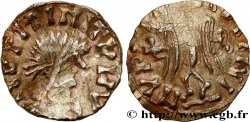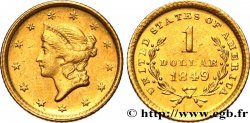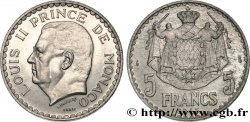bmv_269630 - REGNI DEI FRANCHI DI BURGONDIA - BURGONDIA Triens à la victoire, monograme de GVNDOBALD
non disponibile.
Articolo venduto sul nostro negozio (2012)
Prezzo : 1 800.00 €
Articolo venduto sul nostro negozio (2012)
Prezzo : 1 800.00 €
Tipo : Triens à la victoire, monograme de GVNDOBALD
Data: 507-511
Nome della officina / città: Lyon (?)
Metallo : oro
Diametro : 12,5 mm
Asse di coniazione : 6 h.
Peso : 1,44 g.
Grado di rarità : R3
Commenti sullo stato di conservazione:
Triens intéressant, avec un superbe revers. L’avers est bien identifiable, mais légèrement décentré et frappé avec un coin usé. Revers complet et de frappe vigoureuse avec son brillant de frappe
N° nelle opere di riferimento :
Diritto
Titolatura diritto : D N ANASTA - SIVS PR NC.
Descrittivo diritto : Buste diadémé, drapé d'Anastase à droite.
Rovescio
Titolatura rovescio : LÉGENDE DÉGÉNÉRÉE VICTORIAVACVTON // CONOD.
Descrittivo rovescio : Victoire stylisée, marchant à droite, sur une ligne d’exergue, tenant une couronne et une palme ; le monogramme de Gondebaud dans le champ, devant la victoire.
Commento
Les imitations de solidus et de triens au nom d’Anastase sont parmi les premières monnaies considérées comme mérovingiennes. Avec ce monogramme de Gondebaud, cette monnaie est précisément classée et datée.
Selon Wikipedié ; Gondebaud, né avant 455, mort en 516, est roi des Burgondes à partir des années 470, d'abord avec ses frères, Godégisile, Gondemar et Chilpéric, puis seul à partir de 500.
Il s'est efforcé d'unir les Burgondes et les Gallo-Romains et a réussi à créer une entité et une identité commune à ces deux peuples, forgeant un particularisme burgonde, qui se perpétuera même après l'intégration au royaume franc des Mérovingiens, dans le regnum Burgundiae (royaume de Bourgogne ou de Burgondie), à côté de la Neustrie et de l'Austrasie.
The imitations of solidus and triens in the name of Anastasius are among the first coins considered Merovingian. With this monogram of Gondebaud, this coin is precisely classified and dated. According to Wikipedia; Gondebaud, born before 455, died in 516, was king of the Burgundians from the 470s, first with his brothers, Godegisile, Gondemar and Chilpéric, then alone from 500. He strove to unite the Burgundians and the Gallo-Romans and succeeded in creating a common entity and identity for these two peoples, forging a Burgundian particularism, which would continue even after the integration of the Merovingians into the Frankish kingdom, in the regnum Burgundiae (kingdom of Burgundy or Burgundia), alongside Neustria and Austrasia
Selon Wikipedié ; Gondebaud, né avant 455, mort en 516, est roi des Burgondes à partir des années 470, d'abord avec ses frères, Godégisile, Gondemar et Chilpéric, puis seul à partir de 500.
Il s'est efforcé d'unir les Burgondes et les Gallo-Romains et a réussi à créer une entité et une identité commune à ces deux peuples, forgeant un particularisme burgonde, qui se perpétuera même après l'intégration au royaume franc des Mérovingiens, dans le regnum Burgundiae (royaume de Bourgogne ou de Burgondie), à côté de la Neustrie et de l'Austrasie.
The imitations of solidus and triens in the name of Anastasius are among the first coins considered Merovingian. With this monogram of Gondebaud, this coin is precisely classified and dated. According to Wikipedia; Gondebaud, born before 455, died in 516, was king of the Burgundians from the 470s, first with his brothers, Godegisile, Gondemar and Chilpéric, then alone from 500. He strove to unite the Burgundians and the Gallo-Romans and succeeded in creating a common entity and identity for these two peoples, forging a Burgundian particularism, which would continue even after the integration of the Merovingians into the Frankish kingdom, in the regnum Burgundiae (kingdom of Burgundy or Burgundia), alongside Neustria and Austrasia








 Segnalare un errore
Segnalare un errore Stampate la pagina
Stampate la pagina Condividi mia selezione
Condividi mia selezione Fai una domanda
Fai una domanda Consegnare / vendere
Consegnare / vendere
 Descrittivo
Descrittivo







